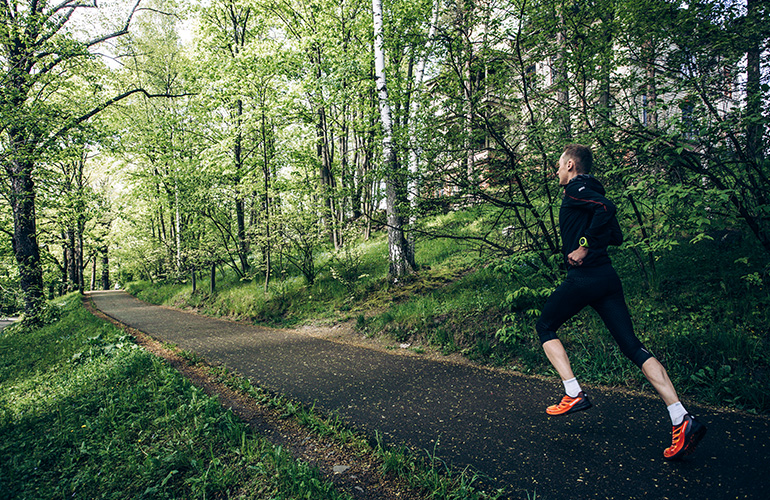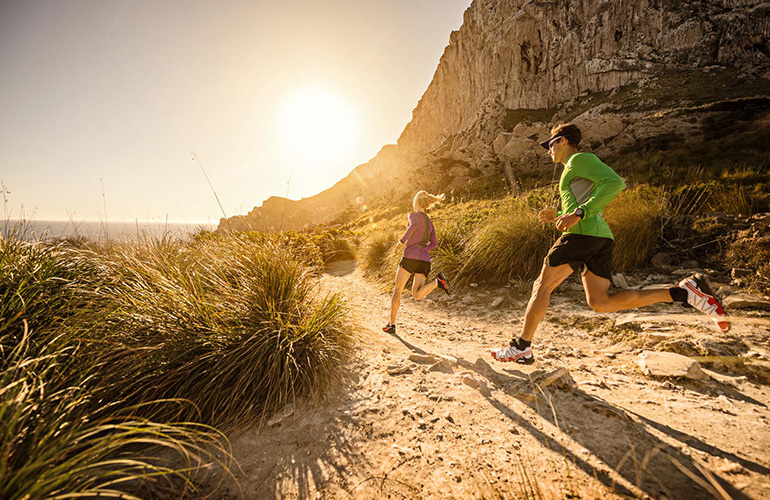As part of our How Do I Run? contest, you can have your running form analyzed by professional coaches from Carmichael Training Systems. Head over to our contest page to find out how to get involved!
Carmichael Training Systems coaches Jason Koop and Nick White know a thing or two about how runners can improve their performance. They’ve been coaching since high school and work with elite level runners and triathletes. Here they share eight running tips every runner should keep in mind.

1. Have a goal
If you’re going to start a running program, you need a goal, no matter what it is. The goal will dictate what your training looks like. It’s better to have a concrete goal as opposed to something vague, such as getting in shape or losing weight.
2. Tailored training
Think about the demands of your event or goal when planning your training. If you’re training for a 100 km ultra marathon, more volume will be required. If you're doing a 5 km race, running a 100 km a week isn't necessary. In that case, your training should be about becoming quicker. Everything should match the event or goal you're aiming for.
Visit the How Do I Run? contest page to find out how to have your running style analyzed
3. Mid foot is best
Mid foot strike is better than running on your toes or heels. You also want your feet to land under the center of your mass, not out in front of your body. This is a common problem for many runners.
4. Getting faster
Runners often think they have to increase the length of their stride to become faster. This causes them to heel strike, putting the breaks on their forward momentum. Increasing your stride length or increasing your leg turnover rate are the two ways to increase speed. You need to determine what you need to work on to improve one or both of these – leg strength, technique or aerobic capacity?

5. Get a lean on
It's good to have a slight forward lean when you run. People often think that means keeping the pelvis and legs in the same position, and just bending forward at the waist. It’s doesn’t. In fact, your shoulders, hips and ankles need to be aligned, but leaning forward – no more than five degrees. This helps gravity give you forward momentum.
Click here to see five running clips analyzed by Jason and Nick
6. Swing those arms
How you swing your arms is very important. Your arms and legs are always connected; if you're pumping your arms, you're going to get more leg speed. Your arms should stay at the sides of the body and the movement should be forward and backwards only. Any side-to-side movement is not contributing to forward progress. A lot of runners have too much torso rotation and that means their arms swing across their bodies, slowing them down.
7. Work that core
Strength work is good and if you're going to do any strength work, core work is definitely the thing to focus on. It’s not just about doing sit-ups, planks or crunches, either. Core work means training everything between your chest and your knees, whether the front, sides or back of your body. Core work will directly help with all the above points.

© Droz Photo/Rosso Damien
8. Eyes on the prize
If you're running on a technical trail, watch where your feet are landing. If you're out on a road or a bike path, then look between 10 to 20 m ahead. You should look down occasionally to monitor your foot strike. For people racing, keep your eyes on the person in front of you. If you're looking at the ground it's really easy for that person to gain ground on you.
MEET THE COACHES FROM CARMICHAEL TRAINING SYSTEMS
Jason Koop is Director of Coaching for Carmichael Training Systems. He began coaching youth track and field as a summer job when he was 16 and continued coaching his own running team into his early 20s. He's hooked on the buzz of helping athletes reach their potential.
Nick White did his first 5 km race when he was five years old. His parents were marathoners, his dad the high school running coach. Needless to say running and coaching has been a major part of his life ever since. He has a Masters in Exercise Science and has been working for Carmichael Training Systems for 12 years.